Mirrorless Cameras vs DSLR Cameras in 2023
Written by Colette Nichol, Solo Filmmaker and Story Strategist
What Is a Mirrorless Camera?
A mirrorless camera is a digital camera which, unlike a DSLR, does not use a reflex mirror.
Instead, it relies on an image sensor to capture light and convert it into an electronic signal, which is then processed and transformed into still or moving images.
When using a mirrorless, you’ll be using an electronic viewfinder or your LCD screen to compose images. While a DSLR has an optical viewfinder wherein you can view the “real world,” a mirrorless camera does not.
Almost all camera brands including Canon and Sony have mirrorless and DSLR cameras. However, as of 2023, mirrorless cameras are the most popular.

But, what is a reflex mirror?
DSLRs have reflex mirrors near the front of the camera body.
A reflex mirror is a movable mirror that directs the light which passes through the lens up into the optical viewfinder, allowing the photographer to see exactly what the lens is seeing.
A DSLR or Digital Single Lens Reflex is called “single-lens reflex” because the photographer (or video shooter) and the sensor share the same view, via a single lens, thanks to the reflex mirror.

The design of mirrorless cameras also knocks out the need for an optical viewfinder.
However, it should be said that some of us (erm, me) love optical viewfinders. They’re kind of awesome!
Often mirrorless cameras are more compact and lightweight than DSLRs that have comparable specs. But then again, there are many crop-sensor DSLRs that are just as small as mirrorless cameras.
And there are many mirrorless cameras that are much bigger and heavier than DSLRs.
In this article, we’re going to be focusing primarily on mirrorless cameras that have an interchangeable lens system i.e. you can take the lenses on and off. While compact cameras are mirrorless, these cameras have been around for many years and aren’t typically used by professionals or enthusiasts. A compact camera does not have interchangeable lenses and usually has low image quality.
Some of the key features of mirrorless cameras include:
- Small form factor
- Light weight
- Excellent in-body stabilization
- Fast shooting speeds for photography
- Excellent autofocus capabilities, including AI-driven autofocus systems
- High frame rate shooting at 4k resolution and beyond
- Interchangeable lens capabilities, i.e. you can put various lenses on the camera
In other words, mirrorless cameras are often (but not always) smaller, lighter.
They also often have greater functionality than their DSLR counterparts.
However, it must be noted that this depends on the model. Not every mirrorless camera is small and light with excellent in-body stabilization and killer AI auto focusing.
If you’re about to buy a camera it’s worth weighing the pros and cons of mirrorless cameras vs. DSLR cameras.
I’ve been using both mirrorless and DSLRs for nearly 10 years, and I can safely say there are great things about both types of cameras. I doubt I’ll ever have just one or the other. But if you’re just starting out, you’ve got a decision to make.
Mirrorless or DSLR?
Or hey, maybe you’re old school and are wondering if you should buy a camcorder or even a compact camera.
No matter what, your decision should be made on solid info and personal preference not a bunch of hype.
So let’s get into it!
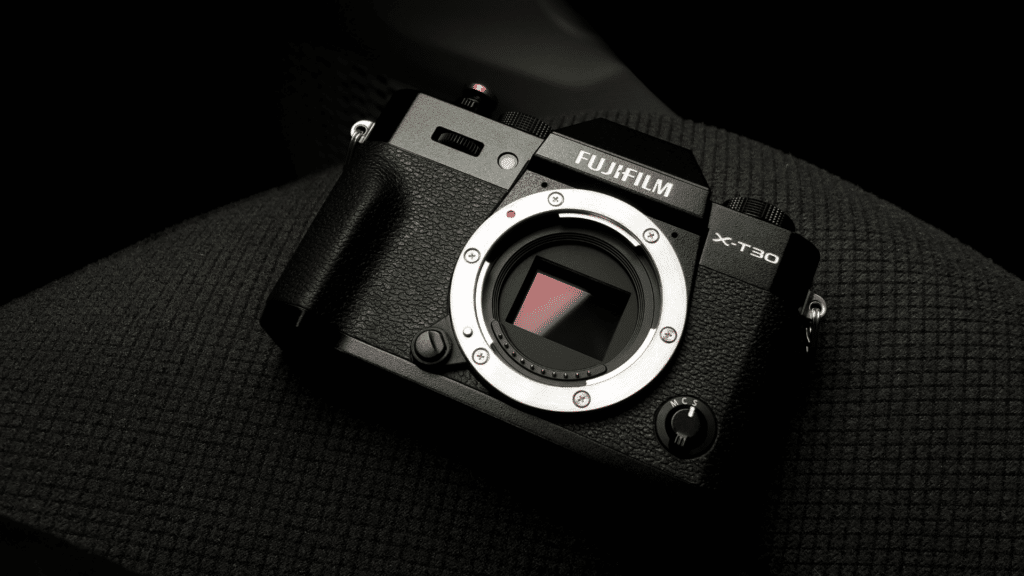
Table of Contents
- Defining Mirrorless Cameras
- Advantages of Mirrorless Cameras
- Disadvantages of Mirrorless Cameras
- Top 4 Mirrorless Camera Manufacturers Right Now
- Comparing Mirrorless and DSLR Cameras
- Choosing the Right Camera for You
- Conclusions
- Frequently Asked Questions
Defining Mirrorless Cameras
In the realm of photography and video, mirrorless interchangeable-lens cameras are a relatively new breed of digital cameras.
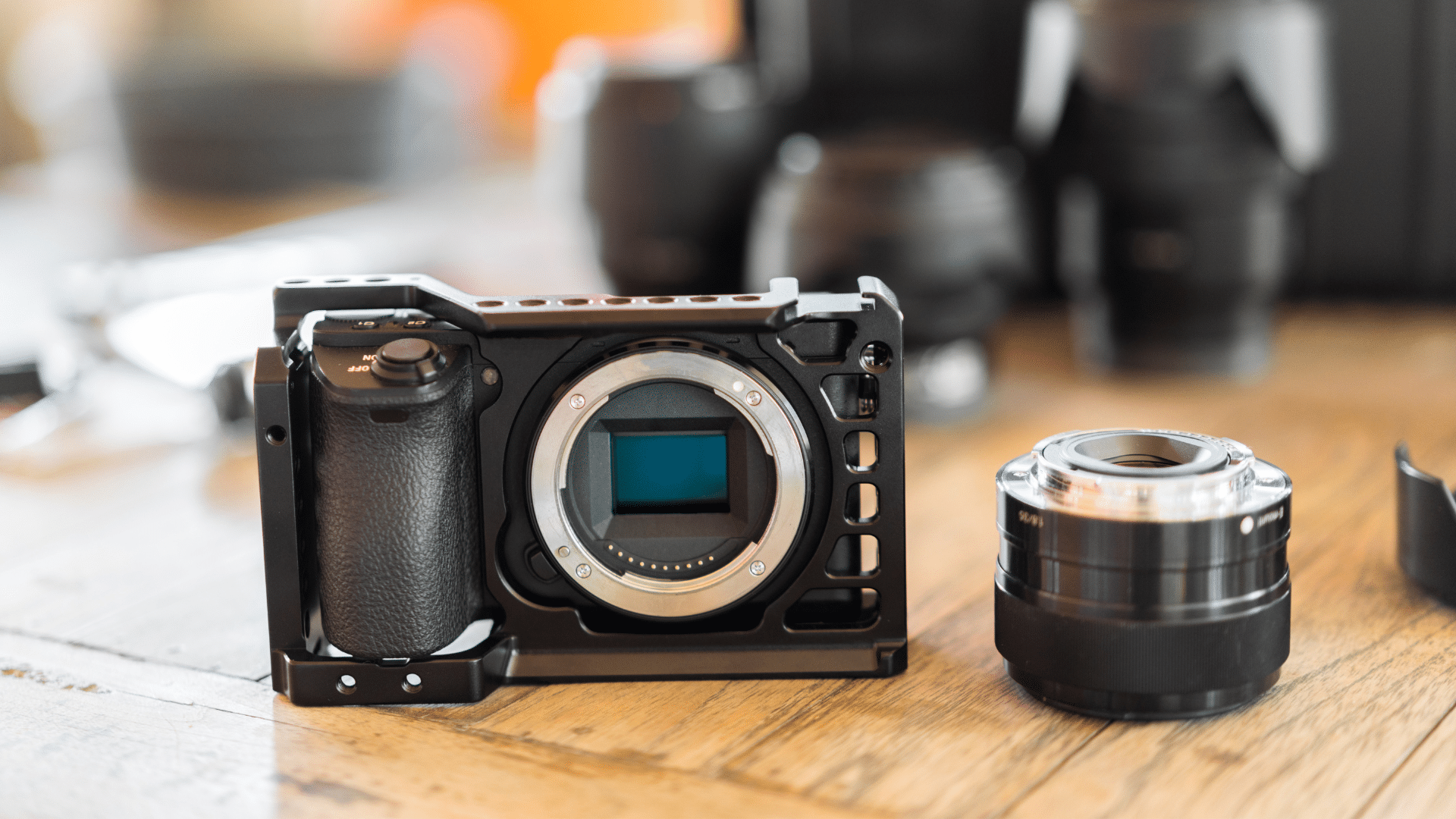
When I first started getting into video production and photography in 2012, nobody was really talking about these cameras. Sure, people had them, but there wasn’t any hype.
That has changed.
In the past couple years, most major photo and video influencers have been hyping the use of mirrorless cameras. And they’re not necessarily wrong to be doing so. These cameras allow you to do so much more with so much less. But, they can also breed laziness which doesn’t actually result in better imagery.
Because here’s the truth: it doesn’t matter how great your camera is, you need to have skills to take advantage of everything your camera offers.
Your camera is just a tool. A necessary one, of course.
But you are the ultimate creator, visionary, and intelligence behind the camera. So, as much as having a great camera is awesome, having knowledge and skills is even more awesome!
OK, well that’s the end of my creative sermon. Now let’s examine the unique components of a mirrorless camera and how they contrast with DSLRs. You know, in case you’re still thirsty for more info bites….
Mirrorless cameras are also called mirrorless interchangeable-lens cameras (MILC), digital single-lens mirrorless (DSLM) cameras, electronic viewfinder interchangeable lens (EVIL) cameras, and compact system cameras (CSCs).
Key Components of Mirrorless Cameras
The key components that make up a mirrorless interchangeable lens camera, specifically a mirrorless one, include:
- Electronic viewfinder (EVF): you compose the shots looking at pixels not real life
- Interchangeable lenses: you can swap out lenses based on your focal-length needs
- Shutter: controls the duration of light exposure to the camera
- Image sensor: full-frame sensors and crop sensors convert light into a digital images

Advantages of Mirrorless Cameras
The rise of mirrorless cameras can be attributed to the many advantages they offer over traditional DSLRs.
Some of these advantages include:
- In-body image stabilization that allows you to shoot handheld video and tripod-free photography
- Compact design and lighter weight means you’re not tired as hell at the end of a day shooting
- Nearly silent shooting can be helpful for both photo and video shooters
- Electronic viewfinder (evf) is loved by some and loathed by others – you be the judge for yourself if you like it or not
- Advanced intelligent autofocus systems which allow you to track birds, bugs, and humans as they move through a scene at high speeds!
- 4K, 6k, and 8k video recording
- High frame rates while shooting in high resolution i.e. 120fps in 4k isn’t uncommon in a higher end mirrorless
These features have made mirrorless camera bodies and mirrorless lenses a popular choice for photographers and video shooters looking to upgrade their equipment or explore new creative possibilities.
And frankly, I get it.
If you have a great mirrorless, you can shoot all day long, get stunning images (if you’re a good shooter) and not be completely and utterly pooped at the end of the day. The same cannot be said for lugging around a heavy DSLR.
Even a smaller crop-sensor DSLR has more heft than most mirrorless cameras.
Compact Design
One of the most noticeable benefits of mirrorless cameras is their compact design.
By eliminating the need for a reflex mirror and optical viewfinder, mirrorless cameras can be built with a smaller and lighter form factor. This makes them more portable and easier to handle, especially for photographers and video shooters who are constantly on the move.
You can easily slip a mirrorless into your bag, and be ready for any shooting scenario without feeling weighed down.
On a recent trip across Vancouver Island, I spent 10 days shooting b-roll every single day, and didn’t ever feel tired. That’s not what would have happened if I’d been shooting with my DSLR or cinema camera, lemme tell you!

Enhanced Intelligent Autofocus
Another advantage of mirrorless cameras is their enhanced autofocusing systems.
These systems often provide faster and more accurate focusing compared to DSLRs, making them ideal for capturing fast-moving subjects or shooting in low-light conditions.
Many mirrorless cameras also feature hybrid intelligent autofocus systems, which combine both phase-detection and contrast-detection autofocus for even better performance. This advanced autofocus technology can lock onto planes, birds, bugs, and the human eye tracking the moving subject and keeping it in focus.
But let’s be honest, you still need to know how to grab focus manually.
And you still need to know how to compose your shots. So let’s not pretend that these things are doing the work for you. They’re just helping you capture moving subjects with greater ease.

Quiet Operation
One of the often-overlooked benefits of mirrorless cameras is their quiet operation.
Since there is no reflex mirror to move out of the way when taking a photo, mirrorless cameras can operate with virtually no noise. This can be an advantage for photographers and video shooters who need to remain inconspicuous.
You can capture creative images without drawing unwanted attention to yourself or disturbing your subjects, making mirrorless camera work an excellent choice for discreet photography and documentary shooting.
Thanks to the magic of mirrorless technology, you can get more shoots without disrupting your subjects.
This near silent operation (along with the small form factor) does make a difference. If you’ve ever tried to film animals with a massive camera, you know what I mean.

Zebras and Focus Peaking
Mirrorless cameras also offer advanced focusing and exposure features, such as Zebras and Focus Peaking, which can be extremely helpful when shooting quickly.
While some DSLRs have these features, most lower end DSLRs do not. Meanwhile, most mirrorless cameras DO have these features—even the lower cost cameras.
Zebras are an exposure aid that displays a striped pattern on overexposed areas of the image, while Focus Peaking highlights the edges of in-focus subjects, making it easier to see which areas of the image are sharp.
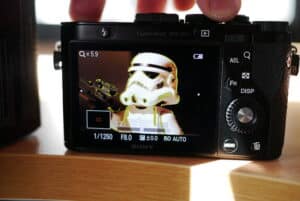
These features can be particularly useful for videographers, as well as photographers who frequently use manual focus or need to quickly verify focus accuracy.
I absolutely can’t stand shooting video without focus peaking. Yes, I’ll do it if I have to.
But if you’re not using an external monitor that’s 7″ or more, it can be tough to see if you got the exact focal point that you want in perfect focus. I’m anal retentive about selecting a precise focal point. I want to be sure that I’ve got my target in the cross hairs perfectly. Focus peaking helps with that a lot.
Meanwhile, zebras are basically a godsend for video shooters who have a bazillion things to think about aka. getting clean audio while also shooting good video. While photographers don’t use zebras as much, for video, they are quite literally a game changer.
Zebras are basically a godsend for video shooters who have a bazillion things to think about aka. getting clean audio while also shooting good video. While photographers don’t use zebras as much, for video, they are quite literally a game changer.
5-Axis Stabilization
Some mirrorless cameras come equipped with 5-Axis Stabilization.
5-Axis stabilization is a type of image stabilization technology that compensates for camera shake along five different axes of movement.
This can result in sharper images and smoother video footage. It helps to counteract the effects of camera shake caused by handholding or shooting at slower shutter speeds.
By providing improved image stabilization, 5-Axis Stabilization allows photographers and video shooters to capture stunning images and videos in a wider range of shooting conditions.
The big deal here is that you can shoot handheld and still get usable footage that you don’t have to stabilize like crazy in post.
As a photographer, having 5-axis stabilization means you can grab stills using a longer focal length lens without the use of a tripod and still manage to get nice, crisp in-focus imagery.
Disadvantages of Mirrorless Cameras
While mirrorless cameras offer many lovely advantages, they also come with their share of drawbacks.
It’s critical to consider these potential downsides when deciding whether a mirrorless camera is right for you. In addition, it’s often nice to try out both types of cameras before making a hard decision—if you have that option.
So let’s discuss some of the biggest drawbacks associated with mirrorless cameras.

Battery Life Can Be Poor Depending on the Camera
One potential downside of mirrorless cameras is their battery life.
Since mirrorless cameras rely on electronic components, such as the electronic viewfinder and LCD screen, they can drain the battery more quickly than DSLRs. This can be particularly problematic for photographers and video shooters who need to shoot for extended periods of time without easy access to a power source.
To counteract this issue, it’s critical that you carry 2-3 spare batteries or invest in an external battery pack to extend the battery life of your mirrorless camera.
You don’t want to miss the shot of the day because your battery ran out.
I always bring 3 or more batteries with me when shooting with any camera, even a DSLR. Maybe that’s excessive, but I don’t care. Nothing is more annoying than being in the middle of framing something lovely and having your camera turn off.
Accessory Compatibility
It used to be the case that many accessories were designed to be compatible with just DSLR cameras, but that’s rarely the case now.
The main compatibility issue is with lenses, but that’s easily fixed with an adaptor. Just make sure that you get a good-quality adaptor if you want to mount your DSLR lenses on a mirrorless. And be aware that there isn’t an adaptor for every single use case on the planet. There are not that many quality adaptors on the market.
Low-Quality Electronic Viewfinders Aren’t Enjoyable to Use
Lastly, the low-quality electronic viewfinders found in some mirrorless cameras can be a drawback for some photographers and video shooters.
These electronic viewfinders (EVF) suffer from low resolution, slow refresh rates, and poor color accuracy, making them difficult to use when composing and reviewing images. It feels like composing an image on a 1970s television.
However, higher-end mirrorless cameras come with high-quality EVF that some people prefer over using an optical viewfinder in a DSLR.
But, in my opinion the EVF experience of low quality mirrorless cameras is so terrible that I would rarely recommend a mirrorless to beginners UNLESS they were going to exclusively use their camera’s LCD screen for composing imagery or had the budget for a higher-end model.
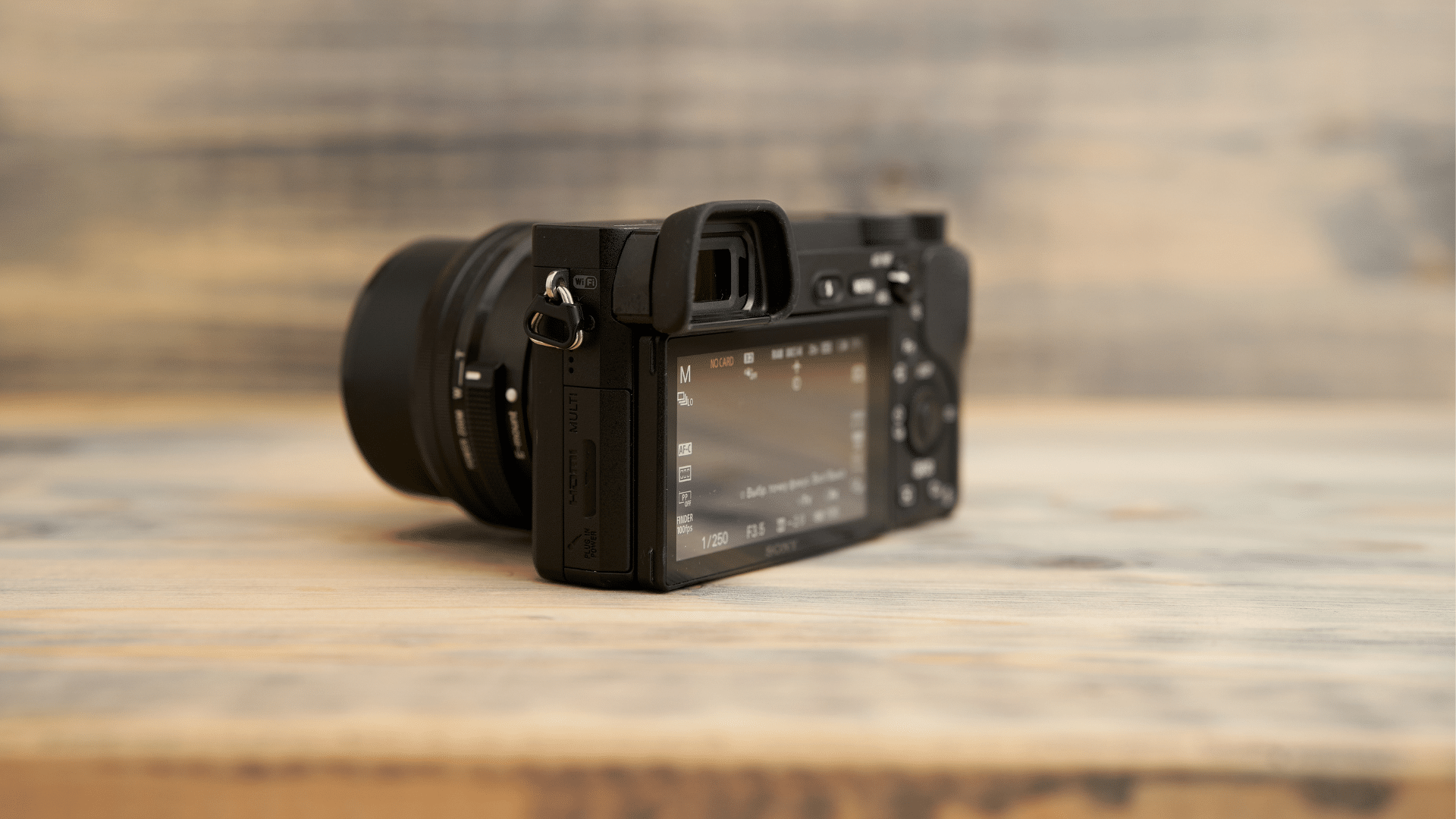

Camera Sensor and Depth of Field
It used to be that mirrorless cameras were only available with a crop-sensor i.e. a smaller camera sensor.
But that’s no longer the case. Now, there are plenty of full-frame mirrorless cameras on the market. A full-frame mirrorless camera will provide the same image quality as a full-frame DSLR camera as long as the dynamic range, codec, resolution, bit depth, and overall colour science are comparable.
When buying a camera, it’s good to know that a full-frame sensor will give you shallower depth of field than a crop-sensor camera.

If you have a crop sensor and a full-frame camera set to the same f/stop, place at the same distance from the subject, and using the same focal length, the full-frame will have shallower depth of field than the crop-sensor.
Whether you’re using a mirrorless or a DSLR is irrelevant when it comes to shallow depth of field.

Top 4 Mirrorless Camera Manufacturers Right Now
Canon Mirrorless Cameras
Canon’s mirrorless camera lineup includes models such as the R6 Mark ii and the R5, which offer a range of advanced features.
These two models have been hyped like crazy. But there’s a reason for that.
They are both excellent cameras. I own the R6 Mark ii, and have been impressed with it’s capabilities and image quality as both a photo and video shooter.
One of the reasons Canon is a top mirrorless camera brand is due to their excellent autofocus system and Canon’s beautiful colour science, which renders gorgeous skin tones in-camera. When I compare Canon and Sony imagery, I always prefer Canon. This is due to the colour science.

Sony Mirrorless Cameras
Sony’s mirrorless camera lineup consists of popular models like the Sony Alpha a7 IV, the Sony Alpha 1, Sony a7CII, and the lower priced Sony a6700.
These cameras are known for their fast autofocus systems, and advanced video capabilities, including high frame rates.
Sony’s mirrorless cameras are insanely popular particularly with video shooters.
If you’re primarily interested in photography, I would recommend looking at Canon or FUJIFILM over Sony simply due to colour and quality of the images that you get straight out of camera from both those brands.
Even low-cost Canon cameras can produce beautiful images. And the range of lenses that Canon has produced are outstanding.
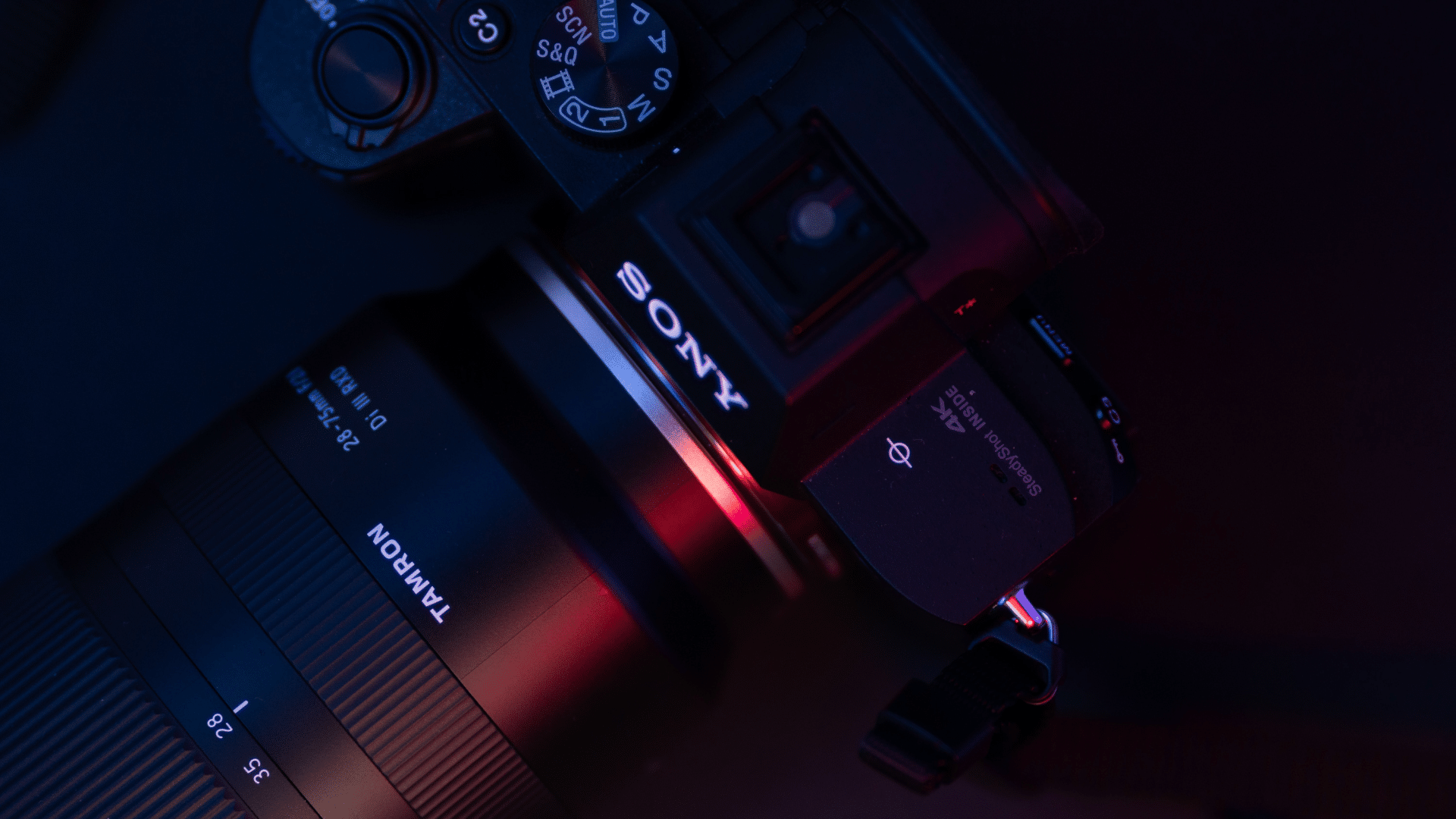
FUJIFILM Mirrorless Cameras
FUJIFILM’s mirrorless cameras, such as the X-T4 and X-T3, are quite popular within a small niche of photographers and video shooters.
People tend to choose a FUJIFILM camera if they’re into street photography, want a camera that feels analogue, or love the FUJIFILM colour science. The colour they produce is arguably the best in the industry. And the specs on these cameras are nothing to complain about. They are a smaller camera manufacturer with a smaller marketing budget, so they don’t get as much online hype.
In addition, they don’t have as extensive a range of lenses as Canon.
So that’s one reason someone might not choose FUJIFILM when buying their next camera.

Panasonic Mirrorless Cameras
Panasonic’s mirrorless camera lineup includes models like the Lumix G100, GH6, GX80/85, and GH5 Mark II.
These cameras offer a range of advanced features.
These cameras were at the forefront of the mirrorless revolution and are super popular with video shooters. Having used the GH4 on many occasions, I can say that they do produce excellent imagery. However, the digital feeling of the camera interface and body wasn’t my favourite.
That said, there are plenty of shooters who absolutely love these cameras. So don’t go by my bias. You have to try one out and see if you like the form factor and user experience.
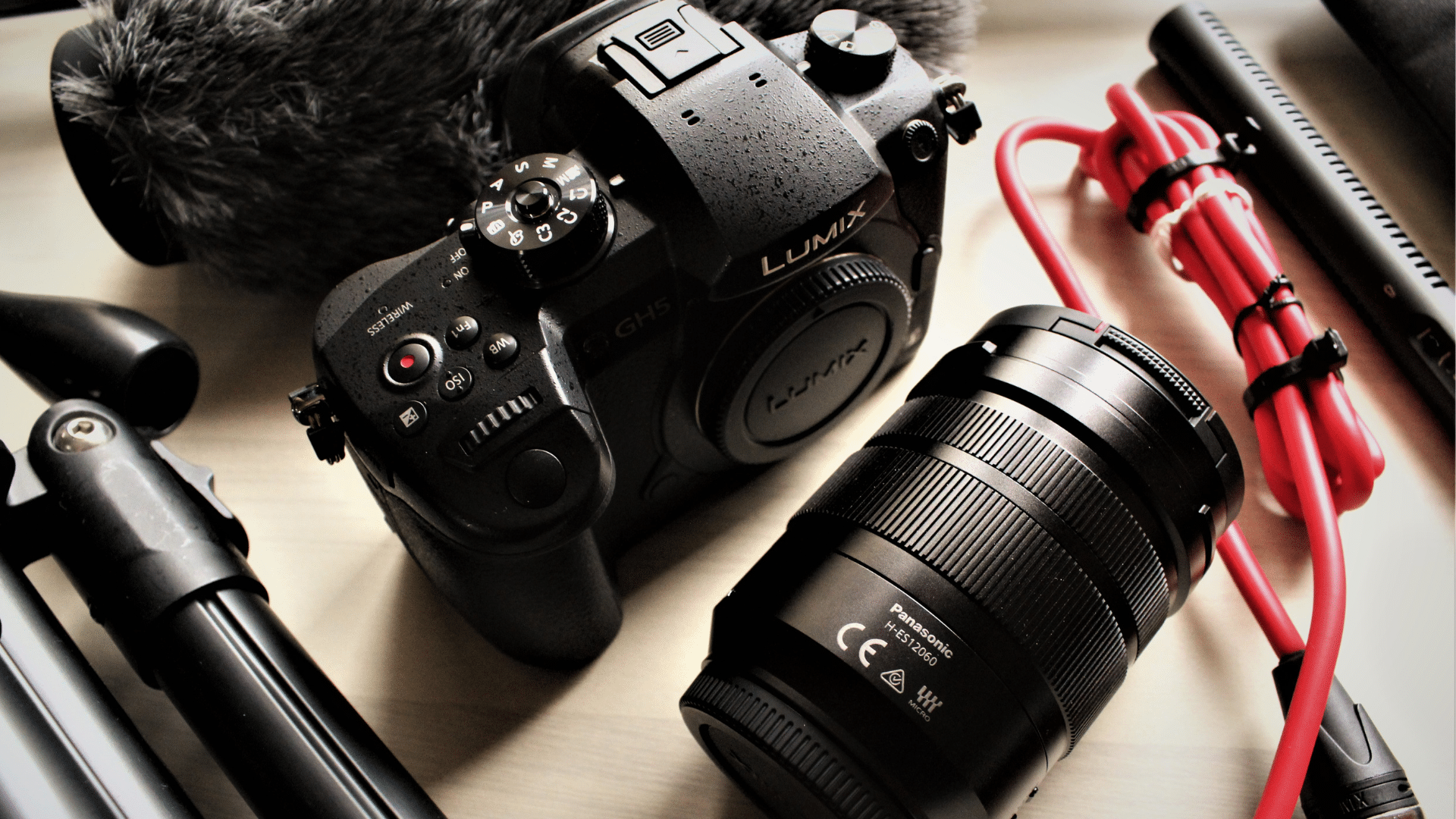
Comparing Mirrorless and DSLR Cameras
Having explored the advantages and disadvantages of mirrorless cameras, as well as some of the top brands on the market, it’s time to compare them with DSLRs.

Image Quality
In terms of image quality, both mirrorless and DSLR cameras are capable of producing high-quality images with comparable resolution and colour science. However, mirrorless cameras generally give you better low-light performance than DSLRs.
But there isn’t a considerable difference in image quality between the two camera types. The choice ultimately comes down to personal preference and specific shooting requirements.
Video Capabilities
When it comes to video capabilities, mirrorless cameras generally have the upper hand.
They often offer higher frame rates at higher resolution (such as 120fps at 4k), better intelligent autofocus, and the type of on-screen aids that video shooters like to have. In addition, the in-body stabilization that many mirrorless cameras have is a game changer for run-and-gun shooters who don’t want to use a tripod while grabbing documentary-style footage.
If you watch F1, you’ll noticed a ton of video shooters who are just holding their cameras straight in front of their bodies with no tripod at all. This is only possible thanks to 5-axis stabilization.
Price Range
Mirrorless and DSLR cameras are available at similar price points, varying from affordable to expensive depending on the brand, features, and specifications.
While mirrorless cameras may be more expensive on average, there are plenty of budget-friendly options available, making it possible to find a suitable camera within your desired price range.
Cameras range from $500 to $1000 for entry level mirrorless models. For something professional, you’ll be spending $2000 for the body and another $3000-4000 for lenses and accessories.

Choosing the Right Camera for You
Now, it’s time to decide which camera is right for you.
This is a personal decision and one that shouldn’t be overly influenced by online hype. Try to focus on what you want to shoot and the specs you’ll need to achieve your goals.
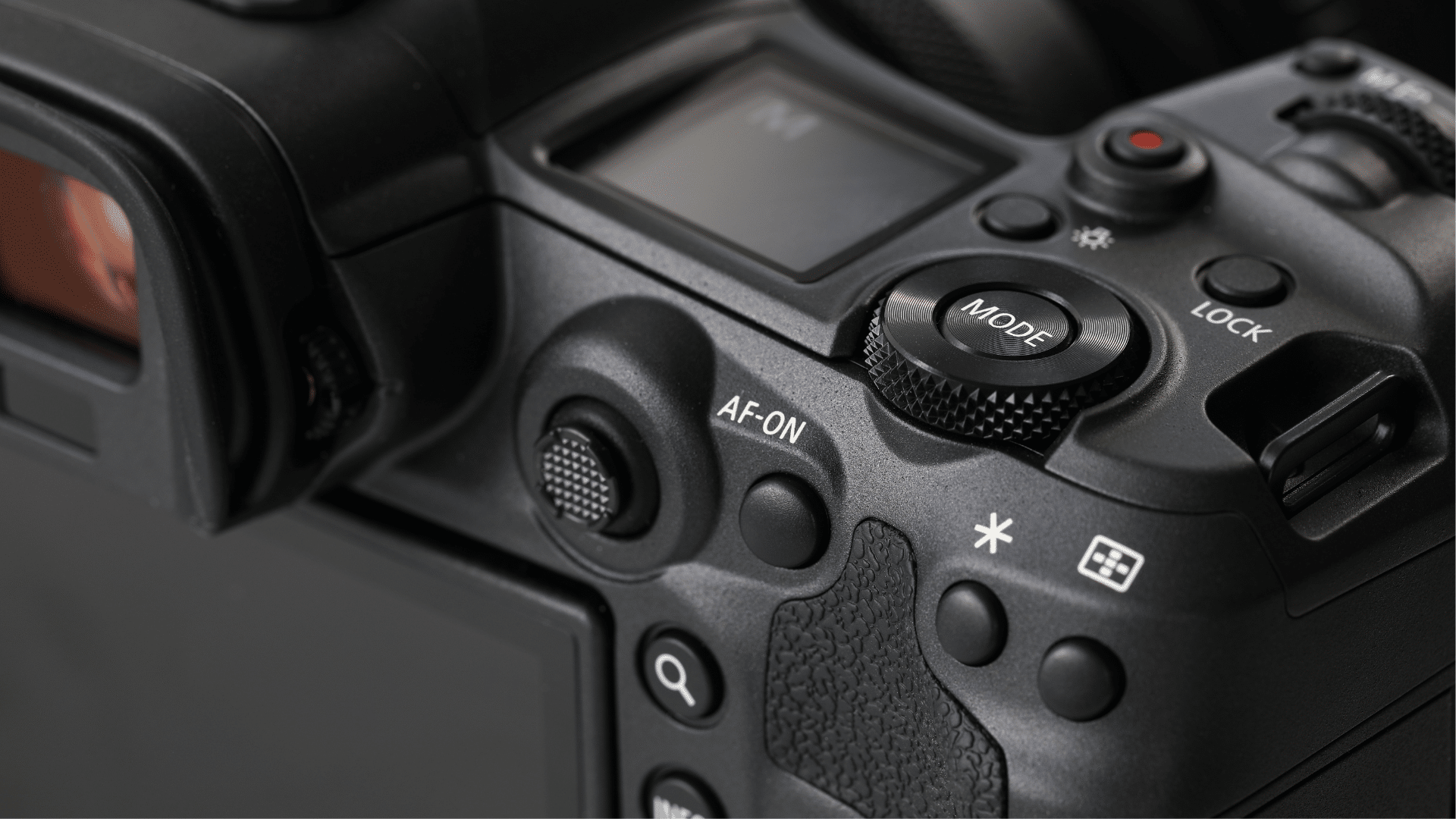
Assessing Your Needs
When choosing a camera, it’s important to consider your needs and preferences.
Here are some questions to ask yourself:
- What type of photography or videography do you plan to specialize in?
- Is the size and weight of the camera important to you?
- What features are essential for your shooting style?
- What is your budget?
- Do you prefer a digital feel or an analogue feeling when using a camera?
By asking yourself these questions and carefully considering your requirements, you can narrow down your options and make an informed decision about the best camera for you.

Conclusions
Within the world of interchangeable lens cameras, mirrorless cameras are gaining more and more popularity.
While DSLRs will never disappear, they are no longer the go-to for pro shooters who need an interchangeable lens camera system. For enthusiasts who don’t need to swap out their lenses, compact camera systems that are also mirrorless have always been popular.
The mirrorless camera revolution has shaken up the professional industry allows solo filmmakers to shoot in a way that was previously impossible. If you want a camera that’s lightweight and great for video work and photography, then a mirrorless may be for you.
But if you’re buying with a budget of under $1000, then getting a mirrorless shouldn’t be your priority.
Instead, look for the camera with the best specs and straight-out-of-camera colour. No matter what, focus on your needs and how the specs will help you achieve your goals. While a lot of the hype around these cameras is warranted, it’s best to stay sane when buying a new camera. It is your hard-earned money you’re spending, after all.
Frequently Asked Questions
Why is a mirrorless camera better?
Mirrorless cameras aren’t necessarily better.
While some high-end mirrorless cameras have outstanding intelligent auto focus, high dynamic range, and IBIS, that doesn’t make them miracle workers. Modern DSLRs and mirrorless cameras both provide excellent image quality. But mirrorless cameras tend to have more bells and whistles. That said there are $1000 Canon DSLRs which provide way better image quality than $1000 Sony Mirrorless cameras.
So, it’s not correct to say that a mirrorless camera is “better.”
Instead, you have to figure out what’s best for YOU. Is a mirrorless better for you? That’s the question that really matters.
What are the pros and cons of mirrorless cameras?
Mirrorless cameras are often smaller and lighter than DSLR cameras and often offer faster shooting speed, and better video capabilities. Some of these cameras suffer from shorter battery life, limited lens selection, terrible electronic viewfinders, and higher price points.
What does a mirrorless camera do?
Mirrorless cameras capture images without the use of a mirror in the camera body, as light passes through the lens directly onto the digital sensor and is displayed on the camera’s screen or electronic viewfinder.
Are mirrorless cameras better than DSLRs?
Mirrorless cameras offer many advantages over DSLRs, but it depends on personal preference and shooting requirements. DSLRs still allow you to frame up an image while looking at the REAL world. And that really does make shooting fine art photography quite pleasant.
Can professional photographers use mirrorless cameras?
Yes, professional photographers can use mirrorless cameras.
But technically, a pro photographer could use a compact point and shoot and still capture amazing images. The power of photography comes from your vision, how you use light to your advantage, your composition and subject matter, as well as your ability to tell a story. All of that can be done with any camera on planet earth. But yeah, sometimes it’s nice to have some extra pixels, better colour, and outstanding dynamic range!
Summary of Key Points
- Mirrorless cameras are a type of modern digital camera known for their compact design and advanced features.
- Mirrorless cameras do not have a single reflex mirror in the camera body.
- While you can use DSLR lenses on a mirrorless camera with an adaptor, you can’t do the reverse.
- They often offer enhanced autofocus, higher frame rates and shooting speeds, and advanced video capabilities compared to DSLRs.
- Pro shooters are increasingly adopting mirrorless cameras because the features the high-end models offer are pretty mind blowing, and they are relatively lightweight compared to DSLRs.
- However, not everyone will love using a mirrorless as they do have a more digital feeling than DSLRs which allow you to compose your shots using an optical viewfinder.
Related Articles:
Learn Filmmaking and Get the Gear Guide
If you’re interested in learning filmmaking, check out the Solo Filmmaking Mentorship Program I created for aspiring filmmakers and video creators. It usually goes live once per year. So I recommend getting the Story Envelope Filmmaking letter which comes out a couple of times per month. That way, you can get filmmaking tips for free and find out when the filmmaking course is going live again.
Also, before you go, grab the Solo Filmmaking Gear Guide and Checklist for Beginners >>>

About the Author
Hi! I’m Colette Nichol. I’m a solo filmmaker and story strategist based out of rainy Vancouver, Canada. I’ve been making videos and micro films for small businesses and global brands since 2014.
Plus, I LOVE to help aspiring filmmakers pursue their dreams and start making films. This blog is designed to help you gain the knowledge you need to become a filmmaker.
If you want more, get on the waitlist for the Story Envelope Academy Solo Filmmaking Mentorship Program. It opens up one time per year and is the best way to become a filmmaking or video pro fast!
CLICK HERE to get on the solo filmmaking mentorship waitlist.